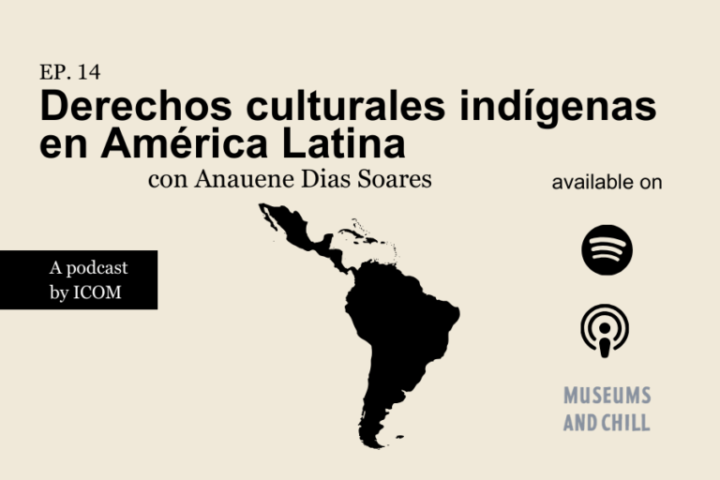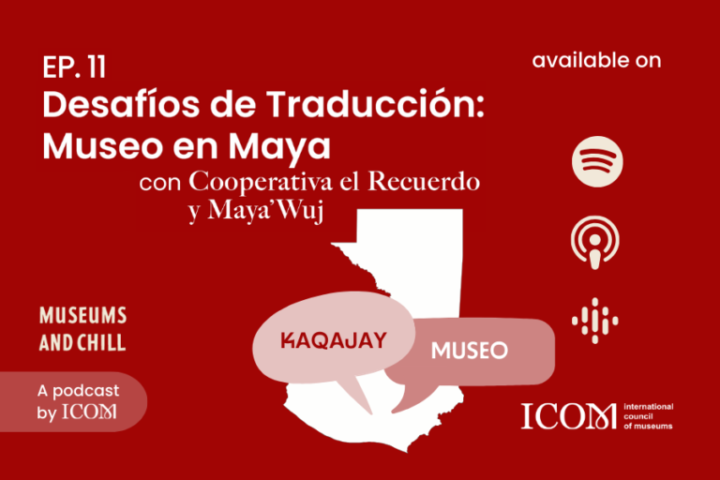Museums and Chill is available on Spotify, Google Podcasts, and Apple Podcast!
In this conversation, we welcome Anauene Dias Soares, lawyer and expert in works of art, CEO of Anauene Art Law – specialised in cultural rights and Board Member of the Brazilian Institute of Cultural Rights (IBDCult).
In order to create a responsible art market, different factors need to be taken into consideration: legal aspects, with adjustments and the overcoming of legal loopholes; taking into account the socio-economic characteristics of the different regions where cultural heritage is located; disparities in qualified human resources and financial allocations for the competent bodies/agencies to act appropriately, as well as the level of cooperation between them at national and international level.
Today in Brazil, there are 7 legal systems to protect cultural heritage, two of which refer to listed goods, either by the National Historical and Artistic Heritage Institute (IPHAN) or by the Brazilian Institute of Museums (IBRAM), when their artistic and historical value is proven and they are considered public goods. In addition, there are only 5 other special laws prohibiting different categories of cultural heritage from evading our borders, which are the legal basis for the International Council of Museums (ICOM) Brazilian Red List, launched in February last year.
With regard to ethnological cultural goods, the protection given by the Convention on International Trade in Endangered Species of Wild Fauna and Flora to objects produced with raw materials from endangered wild fauna or flora, it is important to note that, in addition to curbing illegal trade in material heritage, according to the Declaration on the Rights of Indigenous Peoples, according to the United Nations (UN) Declaration on the Rights of Indigenous Peoples, indigenous people, for example, have the power to control the use of their cultural heritage and to ‘practice and revitalise their cultural traditions and customs’. It is also in the prerogative of the states to grant ‘redress through effective mechanisms, which may include restitution’, even if the expropriation was lawful.
Find out more about the complex relationship between museums and indigenous cultural objects on this Museums and Chill’s episode:
This episode’s host
Anapaula García Soto is Communications Coordinator at the International Council of Museums. Before joining ICOM, Anapaula worked on different communication projects. She holds a B.A. on Communication and Digital Media from the Instituto Tecnológico y de Estudios Superiores de Monterrey and a Masters in Creative Project Management, Culture and Design from the Rennes School of Business and the École européenne supérieure d’art de Bretagne.
This Episode’s Guest
Anauene Dias Soares is a lawyer and expert in works of art, CEO of Anauene Art Law – specialised in cultural rights and Board Member of the Brazilian Institute of Cultural Rights (IBDCult).
Disclaimer
The views and opinions expressed by our podcast’s guests are their own and do not reflect the opinions or views of the International Council of Museums (ICOM) and its bodies and entities. The content provided in this podcast is for informational and entertainment purposes only. ICOM and its bodies and entities do not endorse or take responsibility for any statements or opinions expressed by guests during the podcast. Listeners are encouraged to conduct their own research and seek professional advice when making decisions based on the information discussed in this podcast.
Museums for the International Decade of Indigenous Languages


